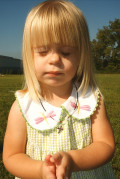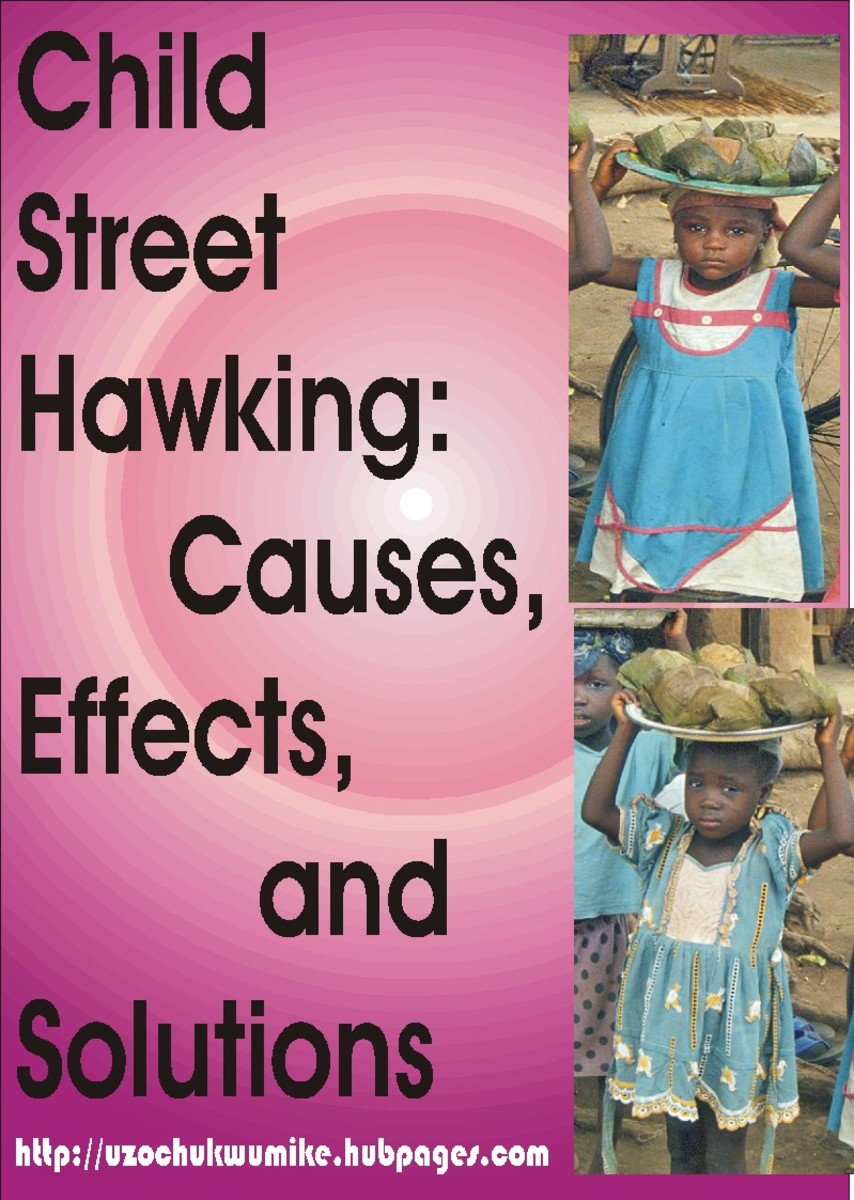The Effects of Foster Care on Children
Cognitive Development
There is an abundance of children throughout the country that are placed in the foster care system. The system is designed to protect children and provide them with a wholesome environment in which they can be raised to their fullest potential. There are many factors that are involved when assessing a family’s ability to parent the child and whether the child would be best served being placed with a family deemed more stable. Yet what are the costs to the children’s emotional stability? Are there consequences when trying to establish long term relationships and/or trust? These issues are just a few of many that have gained attention over the years.
There are always improvements that can be made to any “system” if the rule makers are willing. Often this involves admitting iniquities and does not come easily. The idea of the foster care system in of its self is meant to be in the best interest of the children. Often it is just that, yet does a healthy placement really alleviate the childhood trauma of losing your birth family? In this paper we will explore common reasons for foster care placement, the immediate and long-term psychological affects, and the current system in place. Finally we will reflect on possible improvements and their resounding effects on the children.
The Children’s Defense Fund (CDF) reports in 2008 a total of 463,000 children in foster care.
There are several reasons for a child to be placed in foster care including but not limited to neglect, drug and alcohol use, abandonment, death, abuse, illness and parent/child behavioral problems. Of these the most common is due to abuse. (AACAP, 2005) According to the Children’s Defense Fund (CDF) there were a total of 744,180 reported cases of abuse children in 2008. Of these, 25% suffered from physical or sexual abuse and 6.8% suffered from psychological abuse. (CDF, 2010) This number can be deceiving as psychological abuse is not considered illegal due to an inability to show evidence or proof of the abuse. This may change as research into the immediate and long-term effects this type of abuse become more conclusive.
The reasons parents abuse children are numerous. Among the more common factors are drug/alcohol abuse, having been abused themselves and a lack of stress management skills. When looking at the whole picture I would say that child abuse arises from false sense of entitlement. I say this because to choose addiction, be victim or refuse to learn and change shows only self-interest. In addition to that there is aggressive resistance to any attempt at change. Entitlement is defined by the Merriam-Webster Dictionary as a “belief that one is deserving of or entitled to certain privileges”. (Merriam-Webster 2012) Perhaps recognizing this can help parents become more self-aware and less resistant to change. The following represents the different types of abuse experienced by children and their respective percentage groups.
One of the most obvious aspects of abuse to children is the immediate physiological and psychological response. They instantly experience feelings of fear, betrayal, inadequacy, insecurity and rejection. Most often the reactions of the child are to blame themselves and/or physically cower. This puts children in a very vulnerable state. If you add factors such as being “rejected” from ones birth family it can be easily seen how this could create negative thought patterns and reactions based on these feelings. More commonly apparent are the immediate physical effects on the child. This could range from mild bruising to sever physical trauma. Shaken baby syndrome is one for of child abuse that occurs to often when parents, reaching their threshold of patience shake the child in frustration. As reported by the U.S Department of Health and Human Services (DHHS) this can lead to brain damage, spinal cord injury, developmental issues and even death. (U.S DHHS 2008) Is there an increase in this occurrence in children placed in foster care? According to the C.D.F in 2008 there were 463,000 children in the foster care system, of which 47% resided at a non-relative home. Off all children that were reported to suffer from maltreatment 16.1% of them suffered from physical abuse. (CDF 2010)
Outside of the immediate effects on the child themselves the effects on their environment can be very traumatic also. The children that witness abuse or are the victim of abuse and are then subject to watching a family member arrested or they themselves being removed from the home may fall deeper into a state of confusion and fear. These types of traumatic experiences leave imprints in a young child’s mind. When we are young we form our opinions about how we relate to the world and our own identity. If a child is taught that aggression is what people express when under stress or that abandoning a child or family member is what you do when things get tough, then that child could very well carry those attitudes into their adult life. This is where we see the long-term effects of abuse and the foster care system.
Many children in the foster care system have suffered through some form of abuse if not several. Information on this is either very limited or non-existent as I have been unable to find any specifics, although an article by Evelyn Shaw, MEd and Susan Goode, PT, MLS they stated that “infants and toddlers are the fastest growing age group of children being removed from their homes as a result of abuse or neglect and placed in foster care in the United States” (Shaw, E and Goode, S. 2005) These children have already begun to form negatively based thought patterns and reactions before even arriving at a foster placement. An article by the American Academy of Pediatrics stated that in the 3rd and 4th years of life brain patterns for personality traits, learning processes, and coping with stress and emotions are established. (AAP 2012) When reflecting back to the chart on page 3 of this paper it can be seen that this crucial age of development encompasses the largest percentage of children in the foster care system. What then is the outcome for these children in later life?
The psychological trauma of foster children, in particular foster children that are abused, is compounded by the removal from their birth family. This trauma can have lasting psychological effects. In a report from the U.S National Library of Medicine issues such as a displaced sense of time, fear of attachment, hyper-vigilance and extreme reactions to stress. Children learn their identities and relationship skills at such a young age. When children experience trauma such as removal from their primary care giver they are learning rejection as a thought process. Unfortunately most cases of foster care placement are due to neglect and/or abuse. As stated in the report children experiencing trauma at such a young age can “fix their brain into an acute stress response mode”. This often results in a condition referred to as Hyper-vigilance. (PubMed.gov, 2012)
I know firsthand what this can be like. I started my career in the foster care system at the age of 18 months. From then till the age of 9 I bounced between my birth mothers and 12 different foster homes. I continued moving until the age of 17 when I moved out on my own retiring with a total of 46 different placements, 4 of which were failed adoptions. Hyper-vigilance has definitely become a part of my base mental state. I notice every inflection of tone, body language, and movement in conversations. I record every conversation and can recite them verbatim. I notice when little things change in my environment and above all I am always in “management mode”. I find that I try to not necessarily control but direct my environment and interactions with others.
As a child who has experienced the foster care system and every form of abuse and survived, it is clear that there is hope for all children. Yet help needs to start with the families first in a preventative manner, and then focus on the systems placement criteria and methods. Looking at the different aspects of the foster care system is there a way that we could make the system more effective and safer for children? Is it possible to counter the effects of such a traumatic upheaval of a child’s life? I think it is. The main problem seems to be underfunding resulting in case over loads for case workers and the like. There has been recent changes in Maine that help those who would otherwise be unable to get an education specializing in certain areas, although a degree is not offered they are considered “certified” .
Perhaps early childhood education centered on psychology promoting personal and family awareness may help parents gain skills they need to become parents. Mandatory classes prior to child birth could be instituted by our legal system. These few ideas may reduce the amount of children being placed in foster care. The children that are still taken would benefit from a more selective and comprehensive screening process. Rather than place the child and visit once a month perhaps a more involved approach with both the family and the child may help to avoid abusive placement. Specific behavioral training centered on characteristics of neglectful and/or abusive parents may also help the case workersidentify “red flags” that might otherwise be over looked. By this I mean things that normally go unnoticed. A lot of things can be noticed and/or discerned from simple things such as body language (body posture, positioning and tic’s), their dynamic of power in the family (who talks the most, decision making), level of interest in external family members (such as having pictures that are current of them).of the case workers may also help spot “red flags” that might otherwise be over looked.
In conclusion there is obvious need for reform and revitalization of the foster care system and its constituents. As every system ever build can be modified and upgraded so can these social service systems. Increased funding, mandatory training and education, parental involvement, closely monitored case management and a revitalized interest form societal and governmental bodies can lay the ground work for a better and brighter future for Americas displaced children.
References
AACAP
Foster Care, Facts for Families, American Academy of Child and Adolescent Psychiatry, May, 2005, No. 64. Retrieved on Jan 28th from http://www.aacap.org/cs/root/facts_for_families/foster_care
Children’s Defense Fund (CDF)
The State of Americas Vulnerable Children, Children’s Defense Fund, 2010, p.H-2 Retrieved Jan 25th from 9((((((((((((((((((((((((((((((((((((((((((((((
Evelyn Shaw, MEd and Susan Goode, PT
The Impact of Abuse, Neglect and Foster Care Placement on Infants, Toddlers and Young Children: Selected Resources, Early Intervention and Early Childhood, SPECIAL EDUCATION, PDF, Evelyn Shaw, MEd and Susan Goode, PT, MLS, 2005. Retrieved on Jan. 30th 2012 from http://www.nectac.org/~pdfs/pubs/abuseneglect.pdf
PubMed.gov
American Academy of Pediatrics. Committee on Early Childhood and Adoption and Dependent Care. Developmental issues for young children in foster care. [No authors listed] Pediatrics. PubMed.gov, 2000 Nov; 106(5):1145-50. Retrieved on Jan 29th 2012 from http://www.ncbi.nlm.nih.gov/pubmed/11061791?dopt=Abstract
U.S DHHS
Physical Health Consequences, Long-Term Consequences of Child Abuse and Neglect, Factsheets, Child Welfare Information Gateway, U.S Department of Health and Human Services, 2008 par. 2. Retrieved on Jan. 28th 2012 from http://www.childwelfare.gov/pubs/factsheets/long_term_consequences.cfm#factors
U.S DHHS
“The AFCARS Report: Preliminary FY 2008 Estimates as of October,”Administration for Children and Families, Children’s Bureau, U.S. Department of Health and Human Services Children’s Bureau, at <http://www.acf.hhs.gov/programs/cb/stats_research/afcars/tar/report16.pdf>. Calculations by Children’s Defense Fund.
References Continued.
U.S DHHS
Child Maltreatment , Children’s Bureau, Administration on Children Youth, and Families, Administration for Children and Families, U.S. Department of Health and Human Services, , 2008 (April 2010), Tables 3–4 and 3–10. Calculations by Children’s Defense Fund.






